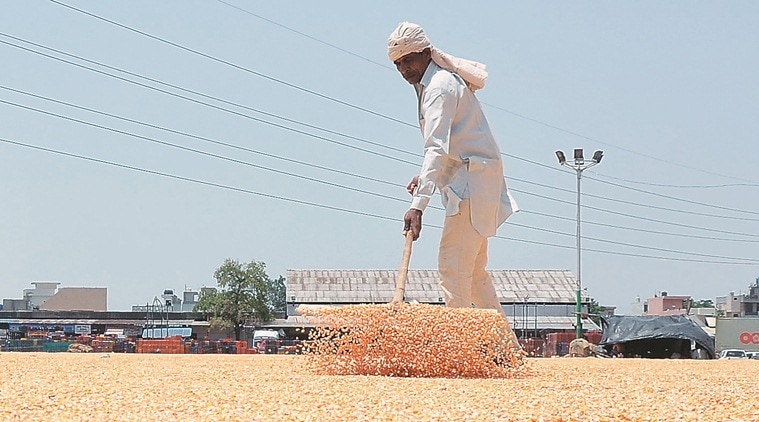
Good rates for their spring season (March to June) maize crop has encouraged several farmers in Punjab to diversify from paddy to maize in the kharif (June to October) season. The area under maize has already increased by 16% as compared to last kharif season, at a time when sowing is still underway.
Kharif season is considered the main season in Punjab for sowing maize. Last year, 1.08 lakh hectares area was under maize and this year, till July 8, the area touched 1.25 lakh hectares (a surplus of 17,000 hectares or 41,990 acres). This is one of the highest in the past three years. The state government is planning to achieve a target of 2.20 lakh hectares under maize.
“Farmers got good rates for their spring maize at Rs 2,000 to Rs 2,200 per quintal, which is much above the rate fixed by the government last year (Rs 1,700/quintal). This has also encouraged them to go for kharif maize,” said Director, Department of Agriculture, Punjab Dr Sutantra Kumar Airy, adding that increasing the area under maize is much needed in Punjab to decrease area under the water-guzzling paddy crop.
Maize needs much less water as compared to paddy while the income from both crops is almost same — between Rs 52,000 to 55,000 per acre at fixed price. The MSP of paddy is Rs 1,815 per quintal this year while maize is at Rs 1,700 per quintal. The yield of paddy is 28 to 30 per quintals per acre, the yield of maize is 25 to 26 quintals.
Around 16 Punjab Agriculture University (PAU) recommended varieties are being sown in Punjab. A farmer needs 8 kg seed per acre, which yields 25 to 26 quintals of moist grain, which needs to be dried before selling.
Currently, Hoshiarpur district is leading with 62,800 hectares under maize, following by the Ropar district with 16,800 hectares.
“We had earlier fixed a target to bring 1.60 lakh hectares under maize this year but now, our target is 2.20 lakh hectares, out of which we have already achieved 56%,” said Airy, adding that sowing will continued for another 10 days.
To promote micro irrigation technique, 1,000 acres of maize is being cultivated under drip irrigation in Punjab this year. Secretary, Punjab Agriculture, Kahan Singh Pannu said that drip irrigation would not only conserve water but also increase yield. He said that out of 1,000 acres of maize to be brought under drip irrigation, 900 acres shall be on surface-based drip system while 100 acres shall be under sub-surface based drip system. Preference is being given to farmers who are diversifying from paddy crop.
Pannu further said that in a first, a pilot campaign of micro irrigation on cotton was also undertaken by the soil conservation department this season, under which 200 acres of cotton crop has been brought under drip irrigation, which will be regularly monitored by departments and scientists.
Under the ‘New Diversification policy’ launched in 2013 for kharif season, the then SAD-BJP government had envisioned bringing around 5.50 lakh hectares under maize by 2017 across the state by decreasing paddy (parmal rice) area from 25 lakh hectares to 19 lakh hectares. However, data sourced from the Punjab agriculture department showed that Punjab was nowhere close to this figure and the maximum area under maize during the tenure of the previous government was 1.65 lakh hectares in 2015-16. After that, there was a continuous declined till 2018, when it was 1.08 lakh hectares.
“We are happy to diversify from paddy to maize if we get good rates like this year but there should be some system so that the prices do not fluctuate so much as its difficult for farmers to bear variations,” said Jasbir Singh, a farmer from Khuradpur village in Jalandhar, adding that last year. He added that last year, he had sold his crop at the rate of Rs 800 to 900 per quintal, while this year the rate was around Rs 2,000 per quintal.
“Farmers go for paddy just because of its assured market, if the same happens to the maize crop, farmers will automatically go for it as no one wants to play with groundwater,” said another farmer, Kartar Singh of Haripur village.